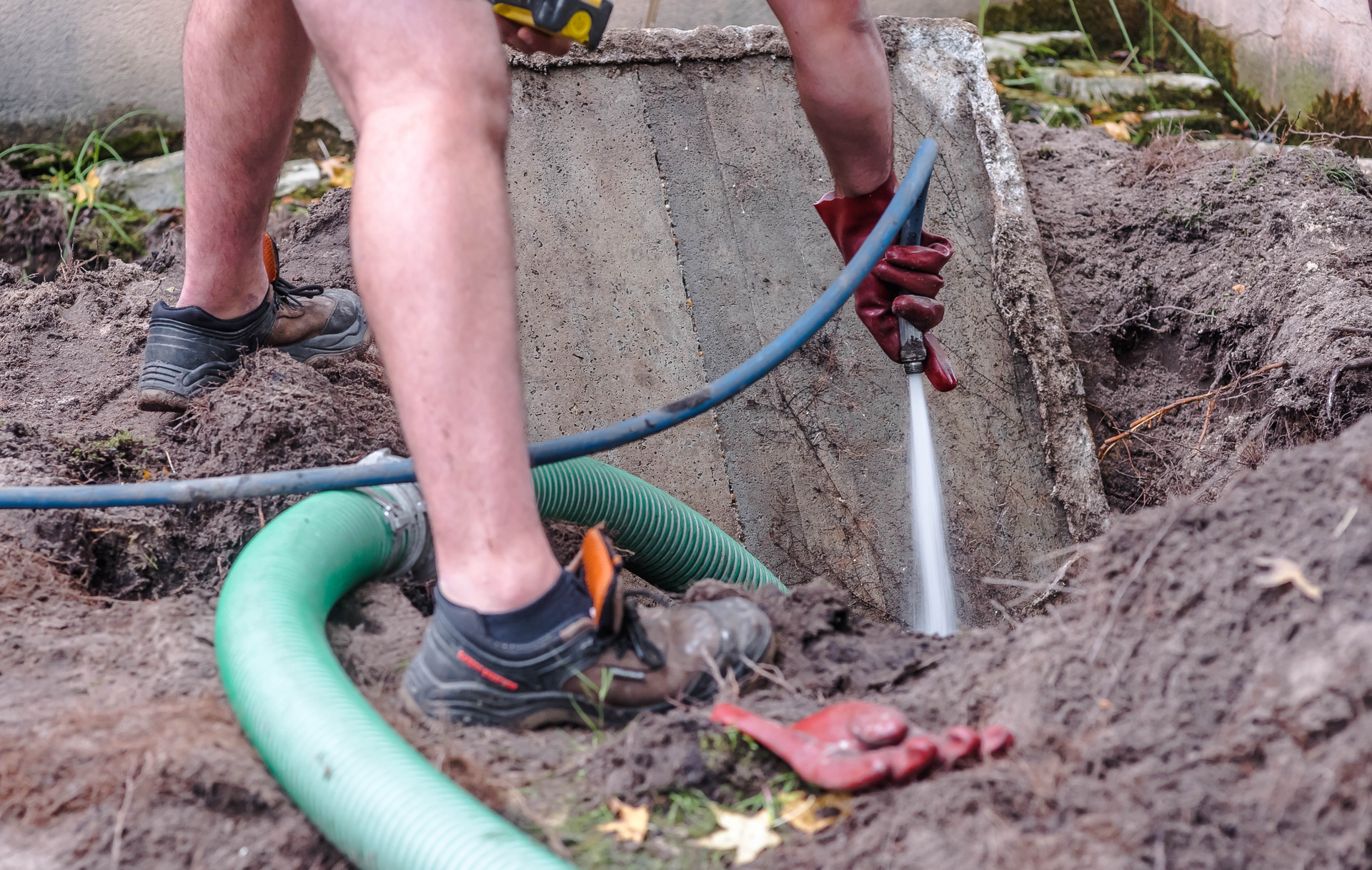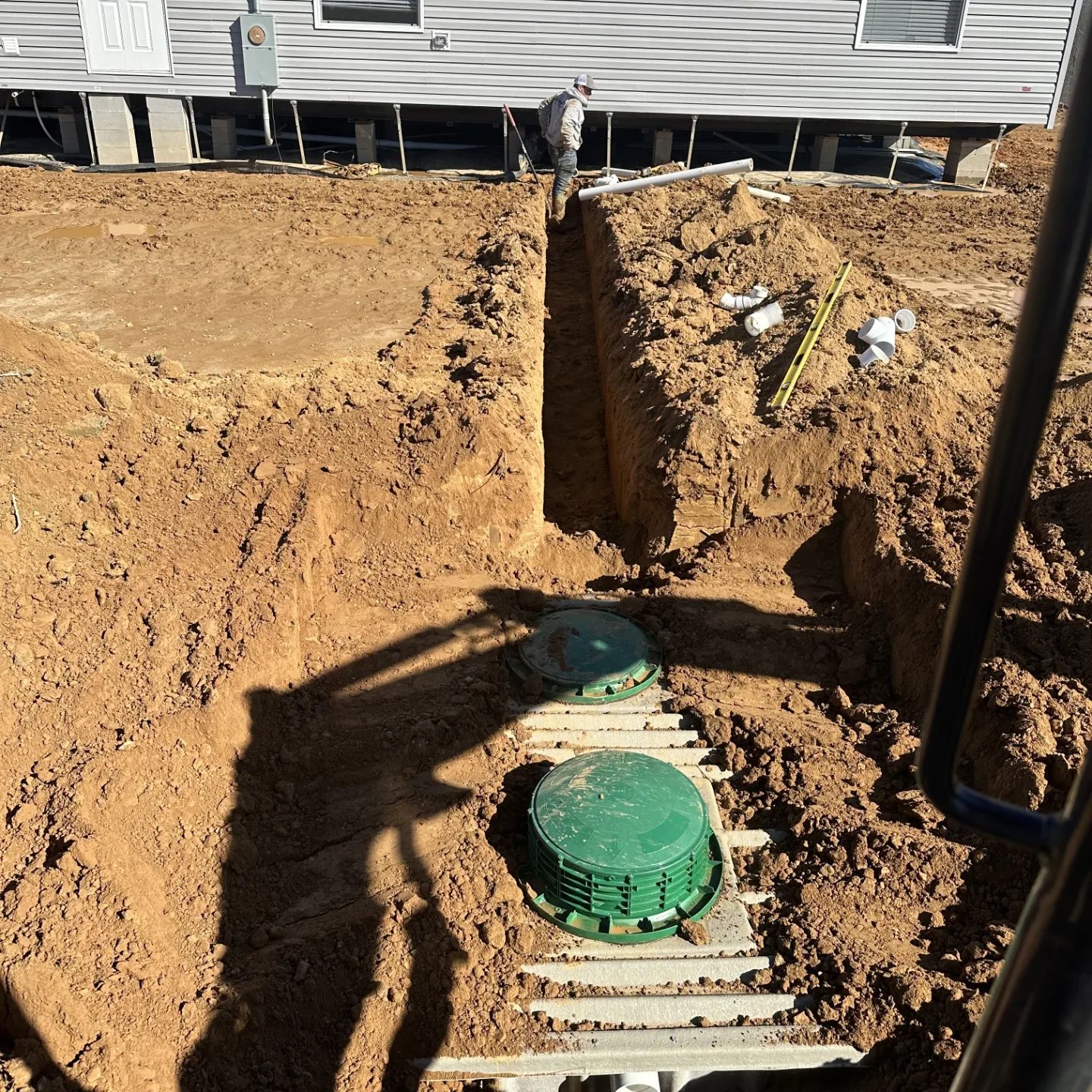Digging Deeper: Oxford Septic Services' Septic System Troubleshooting Secrets
November 16, 2023
Digging Deeper: Oxford Septic Services' Septic System Troubleshooting Secrets
In the charming town of Oxford, Mississippi, where historic architecture meets modern comfort, the last thing homeowners want to deal with is a septic system problem. Yet, as any homeowner knows, septic system issues can arise unexpectedly and disrupt daily life. That's where Oxford Septic Services comes into play. These seasoned professionals possess a wealth of experience and expertise in troubleshooting complex septic system problems. In this extensive guide, we'll delve into their troubleshooting secrets, unveiling how they diagnose and resolve even the most perplexing issues.
Understanding the Complexity of Septic Systems
Septic systems are intricate underground wastewater treatment setups, consisting of various components, such as septic tanks, drain fields, pipes, and more. While they work efficiently most of the time, issues can arise due to several factors:
Age: Older systems may experience wear and tear, leading to problems.
Tree Roots: Tree roots can infiltrate pipes, causing blockages and damage.
Overloading: Excessive water usage or the introduction of non-septic-safe items can overload the system.
Poor Maintenance: Neglected maintenance can lead to issues like tank buildup or component deterioration.
Environmental Factors: Heavy rainfall or rapid temperature changes can affect a septic system's performance.
Oxford Septic Services' Troubleshooting Approach
The professionals at Oxford Septic Services follow a systematic approach to troubleshoot and resolve septic system problems. Here's an inside look at their process:
1. Initial Assessment
When homeowners contact Oxford Septic Services with a septic system issue, the process begins with a thorough initial assessment. This includes discussing the problem with the homeowner to gather essential information. Understanding the symptoms, such as slow drains or foul odors, helps technicians narrow down the possible causes.
2. Visual Inspection
Next, the technicians conduct a visual inspection of the septic system components. They check the septic tank, inspect the drain field, and examine distribution boxes and pipes for any visible signs of damage or blockages. This step often provides valuable insights into the issue's location and severity.
3. Diagnostic Testing
Diagnostic testing plays a crucial role in troubleshooting. Technicians may perform various tests, such as:
Dye Tests: These tests involve adding colored dye to household drains to trace the flow of water and identify any leaks or drainage issues.
Pressure Tests: Pressure tests help assess the integrity of pipes and identify potential leaks or blockages.
Septic Tank Inspection: Opening the septic tank to check the levels of solids and scum can reveal whether the tank needs pumping.
4. Advanced Technology
Oxford Septic Services employs advanced technology to diagnose complex problems. Video camera inspections of pipes provide a clear view of any obstructions or damage deep within the system. This technology is invaluable for pinpointing issues without costly and invasive excavation.
5. Comprehensive Analysis
After gathering data from the initial assessment, visual inspection, and diagnostic tests, technicians perform a comprehensive analysis. They combine their findings to develop a clear understanding of the problem's root cause. This step is crucial for developing an effective troubleshooting plan.
6. Tailored Solutions
Once the issue is identified, Oxford Septic Services crafts tailored solutions. These may include:
Repairs: Fixing damaged components, such as pipes or septic tanks.
Pumping: If the septic tank is full or overflowing, pumping is necessary to restore proper functionality.
Root Removal: In cases of tree root infiltration, technicians remove roots and take measures to prevent future intrusions.
Drain Field Restoration: For drain field issues, restoration techniques may be employed to improve drainage.
Regular Maintenance: Advising homeowners on proper septic system maintenance to prevent future problems.
7. Transparent Communication
Throughout the troubleshooting process, Oxford Septic Services maintains transparent communication with homeowners. They explain the issue, the proposed solution, and the associated costs. This open dialogue ensures that homeowners are informed and comfortable with the chosen course of action.
The Importance of Professional Troubleshooting
While some homeowners may attempt DIY troubleshooting, it's important to highlight the advantages of hiring professionals like Oxford Septic Services:
Expertise: Professionals have extensive knowledge and experience, allowing them to quickly and accurately diagnose issues.
Advanced Equipment: They use cutting-edge tools and technology for precise diagnostics.
Preventative Measures: Professionals not only fix the immediate problem but also provide guidance on avoiding future issues.
Time and Cost Efficiency: Professional troubleshooting can save homeowners time and money in the long run by resolving problems efficiently and effectively.
Conclusion
In the charming town of Oxford, Mississippi, where the preservation of historic beauty meets the demands of modern living, septic system issues can disrupt daily life. Fortunately, Oxford Septic Services' team of experts possesses the knowledge, experience, and advanced tools to troubleshoot and resolve even the most complex problems. Their systematic approach, transparent communication, and tailored solutions make them the go-to choice for homeowners facing septic system woes. When it comes to septic system troubleshooting, Oxford Septic Services digs deeper to deliver the solutions homeowners need to restore peace and functionality to their homes.

Septic tank pumping is a crucial aspect of septic system maintenance that often goes overlooked by property owners. Regular pumping helps prevent costly repairs, prolongs the lifespan of the septic system, and protects the environment from contamination. In this guide, Oxford Septic Services shares valuable insights into the importance of routine septic tank pumping and its many benefits. Chapter 1: Understanding the Role of Septic Tank Pumping Overview of the septic tank pumping process and its significance in maintaining a healthy septic system Explanation of how septic tank pumping removes accumulated solids and sludge from the tank, preventing clogs and backups Chapter 2: Preventing Costly Repairs and System Failures Discussion of the potential consequences of neglecting septic tank pumping, including system backups, drain field damage, and groundwater contamination Exploration of the financial implications of septic system repairs and replacements compared to the relatively low cost of routine pumping Chapter 3: Extending the Lifespan of Your Septic System Explanation of how regular septic tank pumping helps prolong the lifespan of the septic system by reducing stress on system components and preventing premature failure Discussion of the correlation between routine pumping and the overall health and longevity of the septic system Chapter 4: Protecting the Environment and Public Health Examination of the environmental and public health risks associated with untreated wastewater discharge from poorly maintained septic systems Explanation of how routine septic tank pumping helps mitigate these risks by preventing groundwater contamination and protecting local water sources Chapter 5: Maintaining Property Value and Resale Potential Exploration of the impact of a well-maintained septic system on property value and resale potential Discussion of how routine septic tank pumping demonstrates responsible property ownership and can increase buyer confidence during real estate transactions Chapter 6: Ensuring Regulatory Compliance Overview of local regulations and requirements regarding septic system maintenance and pumping frequency Explanation of how routine septic tank pumping helps property owners remain in compliance with regulatory standards and avoid potential fines or penalties Chapter 7: Best Practices for Scheduling Septic Tank Pumping Recommendations for establishing a regular pumping schedule based on factors such as household size, water usage, and septic system capacity Tips for working with professional septic service providers like Oxford Septic Services to schedule timely and efficient pumping services Conclusion: Routine septic tank pumping is an essential aspect of responsible septic system ownership, offering numerous benefits for property owners, the environment, and public health. By understanding the importance of routine pumping and working with trusted professionals like Oxford Septic Services, property owners can ensure the long-term performance and reliability of their septic systems.

Installing a septic system is a critical step in ensuring proper wastewater management for residential and commercial properties. However, the installation process can be complex and requires careful planning and execution. In this comprehensive guide, Oxford Septic Services provides essential information and expert tips for homeowners and property owners considering septic system installation. Chapter 1: Understanding the Basics of Septic Systems Overview of septic systems and their components, including the septic tank, drain field, and distribution box Explanation of how septic systems function to treat and dispose of wastewater on-site, without access to a municipal sewer system Chapter 2: Assessing Site Conditions and Permitting Requirements Guidance on assessing soil conditions, topography, and site suitability for septic system installation Explanation of the permitting process and regulatory requirements for septic system installation, including obtaining necessary permits and approvals from local authorities Chapter 3: Designing the Septic System Overview of the steps involved in designing a septic system, including determining system size, layout, and location Discussion of factors to consider when designing a septic system, such as property size, soil type, and groundwater levels Chapter 4: Selecting and Installing Septic System Components Explanation of the different types of septic tanks, drain fields, distribution boxes, and other system components available for installation Step-by-step instructions for properly installing septic system components, including excavation, tank placement, piping installation, and backfilling Chapter 5: Ensuring Proper System Ventilation and Plumbing Connections Importance of providing adequate ventilation for the septic system to prevent the buildup of harmful gases, such as methane and hydrogen sulfide Guidelines for properly connecting plumbing fixtures, such as toilets, sinks, and showers, to the septic system to ensure efficient wastewater flow Chapter 6: Conducting Final Inspections and Testing Overview of the final inspection and testing process to ensure that the septic system meets all regulatory requirements and functions properly Explanation of common tests conducted during the final inspection, such as hydraulic load testing, dye testing, and soil percolation testing Chapter 7: Maintaining and Caring for Your New Septic System Recommendations for ongoing maintenance and care of the newly installed septic system, including routine pumping, inspection, and monitoring Tips for avoiding common pitfalls and ensuring the long-term reliability and performance of the septic system Conclusion: By following the guidelines and expert tips provided in this guide, property owners can navigate the septic system installation process with confidence. With careful planning, proper design, and professional installation by Oxford Septic Services, property owners can ensure the reliable operation and longevity of their septic systems for years to come.
